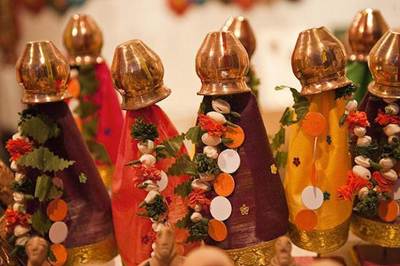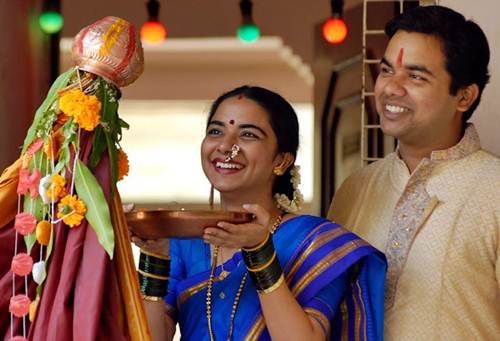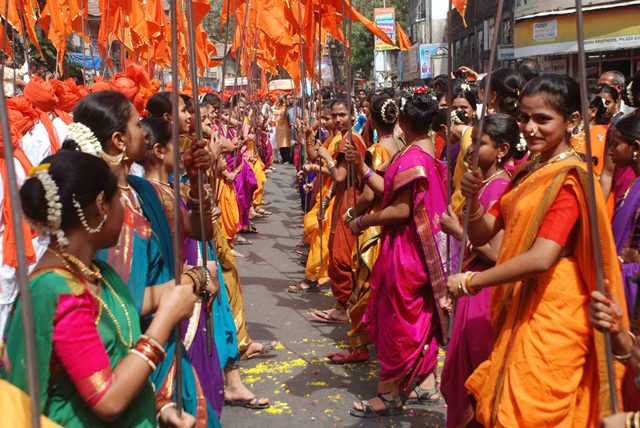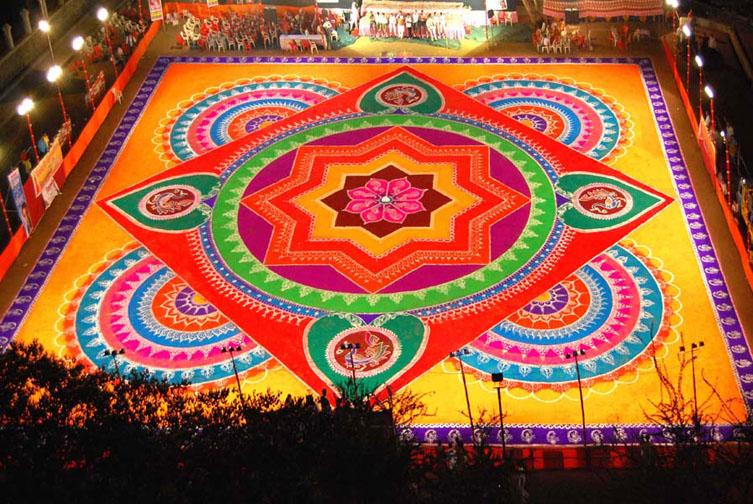Gudi Padwa or Ugadi 2016
When: April 8, 2016
Where: Maharashtra, Karnataka and Manipur
Gudi Padwa is the Maharashtrian New Year. This festival is also celebrated in Karnataka and some other parts of South India where it is called Ugadi or Yugadi.

Gudi (a colorful cloth adorned with garlands, sugar crystals, mango leaves and neem leaves) tied to the end of a bamboo stick is hoisted outside windows or entrances on Gudi Padwa to welcome prosperity and to ward off the evil eye.
Ugadi or Gudi Padwa is celebrated on the first day of the Indian month of Chaitra. The Indian National Calendar (Saka Calendar) starts with the month of Chaitra (March/April). So the first day of Chaitra is the Indian New Year or Bhartiya Nav Varsh.
There are several stories behind this festival. Like many Indian festivals, Gudi Padwa is also a harvest festival. It is celebrated at the end of the Rabi crop season. Mangoes begin to ripe at around this time. Read about other harvest festivals.
- Makar Sankranti – Indian Thanksgiving
- Kite festival of Gujarat
- Holi – the harvest festival of North India
There are plenty of other stories too. Hindus believe that the universe was created on this day. Devotees seek the blessings of the 33 million gods and goddess of the Hindu Pantheon on this day. It is also a great day to pray for the well-being of the entire universe.
Gudi Padwa is also celebrated in the North eastern state of Manipur where it is known as Sajibu Nongma Panba Cheiraoba. Manipuris prepare a variety of delicious foods on this day. In the evening, they climb a hillock in their neighborhood.

A Maharashtrian couple performs Arti in front of Gudi on the occasion of Gudi Padwa.
Maratha King Shivaji is credited to have started the Gudi Padwa celebrations in the Maharashtra. Gudi is a stick adorned with a piece of beautiful cloth. Usually a green or yellow cloth with a zari brocade is bought for this. The cloth is tied to the stick. Sugar crystals, neem leaves, mango leaves and a garland of red or yellow flowers are also used to decorate Gudi. A silver or copper pot is then placed on its top in an inverted position. Shivaji started this tradition of raising Gudi on Gudi Padwa. It is a symbol of victory. The cloth flying in the winds resemble a flag. Today every Marathi household prepares Gudi on Gudi Padwa and hoists it at their entrance.
The hoisting of Gudi is the most important ritual of the day. After the Gudi is hoisted, people will pray to Lord Brahma who according to Hindu mythology created the universe. Beautiful rangolis are made at the entrance of homes and in public places. Read about why Indians make rangolis.
Before Gudi Padwa people clean their homes and courtyards. They wear new clothes on this day. The general atmosphere is full of joy and optimism. Families start the day by eating a paste made with neem leaves, tamarind and jaggery. This paste has blood purifying properties. It is also known to strengthen one’s immune system.

Hindu women wearing colorful saris in the traditional Maharashtrian style participate in a Gudi Padwa procession held in Mumbai. Gudi Padwa marks the beginning of a New Year.
In Mumbai where Gudi Padwa is celebrated with much fervor colorful parades are organized on this day. Men and women wearing traditional Maharashtrian clothes participate in these festivities. Indian festivals are incomplete without dance and music. Nashik Dhols (a percussion instrument) are an essential part of the cultural programs celebrated on this day so expect noise levels to hit new highs.
Maharashtrian families prepare Shrikhand (a sweet dish), Puri (made of wheat flour) and Puran Poli (another sweet dish made of wheat flour, jaggery and dal) on this day.
Gudi Padwa is one of the most auspicious days of the year. It is believed that buying gold, home or a new vehicle on this day will bring prosperity. Gudi Padwa is also a great occasion to launch new ventures.
